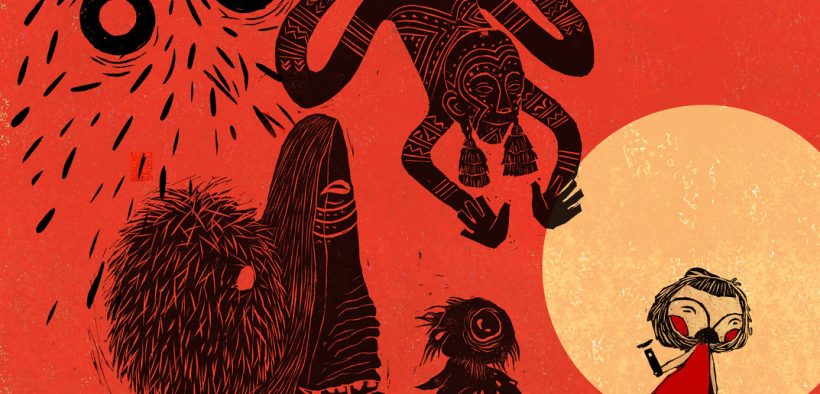In Conversation with Canato Jimo

Canato Jimo, illustrator and art director at Pratham Books has illustrated picture books like ‘The Very Wiggly Tooth’, ‘Bobo and the Worms’, and has also both written and illustrated ‘Asamo, is that you?’ (with Ogin Nayam) and ‘Snip’, a wordless picture book for emergent readers. His stories, inspired by everyday life, are accompanied by detailed and vivid illustrations. We spoke to Canato to get a glimpse into his approach to visual storytelling for children.

Artwork from Bobo and the Worms, written by Abokali Jimomi and illustrated by Canato Jimo
Alongside the plot, illustrations are among the most important parts of a picture book. As a writer AND illustrator, how do you fulfil both roles and how are they distinct from each other?
I am an illustrator who sometimes writes. So I come up with an idea and visualise it first. I then simultaneously work on illustrations and words to shape the story.
One advantage of both illustrating and writing a book is that it leaves more room for experimentation. You can decide whether you want the text to speak or the visuals, and reduce redundant elements and space fillers.
When it comes to the text, it’s a collaborative process for me. I work with the editor(s), bouncing ideas off them more often than not. I cannot stress enough how crucial editors are in shaping a book.

Artwork from Snip, written and illustrated by Canato Jimo
Describe your creative energy in one word
Deadlines 🙂 That’s when it really peaks.
Should children’s book illustrations be detailed or leave some room for imagination? Which do you prefer?
Depending on the book, they can be either or both though I do love a generous use of white space. The important thing is to think your approach through.

Artwork from Asamo, is that you?, written and illustrated by Canato Jimo and Ogin Nayam
How do you push the narrative of a story using only illustrations? What elements do you focus on to enable a child to ‘read’ without words?
A strong visual sequential narrative, enabling the reader to follow from one visual to the next; creating the anticipation of flipping the page; good use of emotions, colours and semiotics. Shaun Tan’s “The Arrival” is a fine example of a wordless book that employs these elements.
Where do you draw inspiration from?
Lived experiences, seemingly mundane everyday life.

Artwork from The Very Wiggly Tooth, written by Reshma Thapa Gurung and illustrated by Canato Jimo
Pratham Books: A few illustrators you admire?
Canato Jimo: Oliver Jeffers, Jon Klassen, Patricia Polacco, Shaun Tan, Isabelle Arsenault, Priya Kuriyan, Gitanjali Iyer, Rajiv Eipe.
Click here to buy The Very Wiggly Tooth in English, and read Bobo and the Worms, Snip, and Asamo, is that you? on StoryWeaver.
